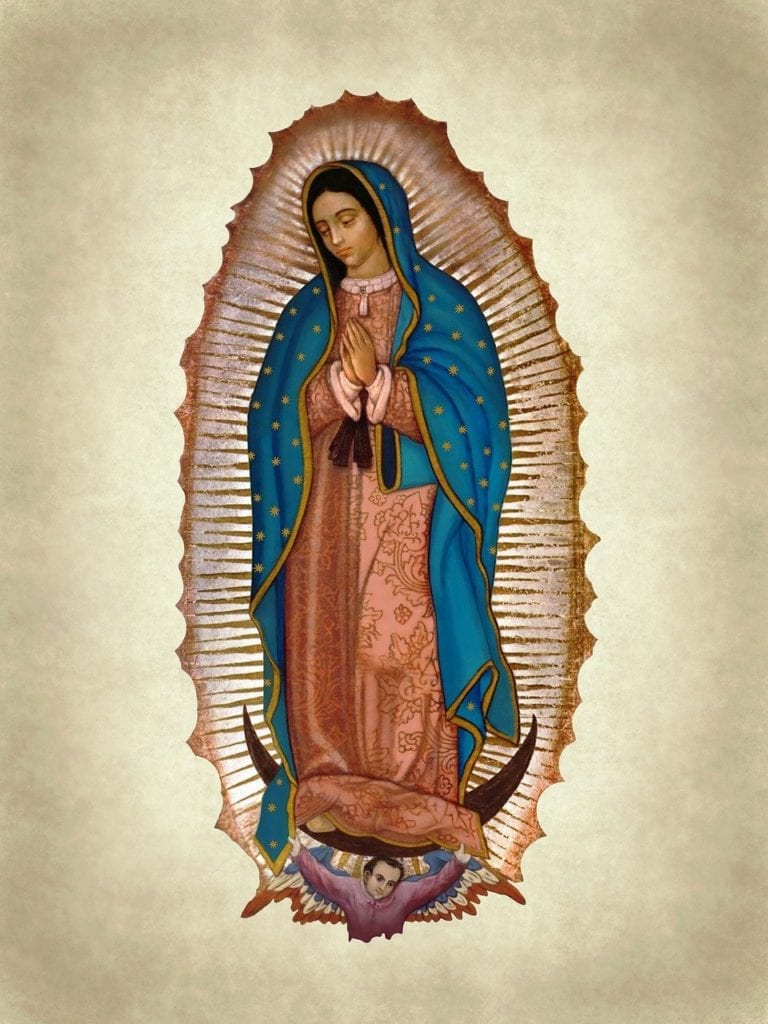No concept, no image, no language can contain everything about God.
In the Church we are used to thinking of God as Father. Nevertheless, human language will always be limited. We highlight the paternal image that Jesus communicated to us in the Lord’s Prayer, but there are also maternal images of God in the Bible.
- God is presented defending her people like a mother bear deprived of her cubs (Hosea 13:8),
- God is described as a female eagle (Deuteronomy 32:11-12),
- God gives birth (Deuteronomy 32:18),
- God’s love is greater than of a nursing mother (Isaiah 49:15),
- God appears as a woman in labor (Isaiah 42:14),
- God is described as a queen of heaven (Jeremiah 44:25),
- God is compared to a woman (Psalm 123:2), and
- God appears as a mother (Psalm 131:2).
Language helps us describe our personal experience with God. Our experience is valuable, but limited. What does all this have to do with Our Lady of Guadalupe?
In the Nican Mopohua, the text that narrates the encounter between Juan Diego and Our Lady, the maternal face of God appears in the words of the Virgin Mary.
The Americas were introduced to a Church that preached God as the Father. At the same time, the Christian God was the God of the conqueror and punisher. The newly instructed indigenous inhabitants were called to fear God, a God to whom they had to bow in order to live.
Guadalupe appears in a different way. She speaks to Juan Diego with a tender language. We hear these words of Mary in the first apparition:
“My Juanito, my Juan Dieguito…My dearest and youngest son... I am truly your compassionate mother, yours and of all the people who are in this land, and of all the other people of different ancestries, of those who love me, those who cry out to me, those who seek me, those who trust in me. Because there I will listen to their weeping, their sadness, to remedy, to cleanse and nurse all their different troubles, their miseries, their suffering…” (#29-32).
In the second appearance, we find these words of Guadalupe:
“And I beg you, my youngest and dearest son, and I order you strictly to go again tomorrow to see the Bishop. And in my name make him know, make him hear my wish, my will…I who am the mother of God, am sending you” (#60-61)
In the third appearance, when Juan Diego faces his uncle’s illness, he hears from Our Lady:
“Am I not here, I who am your mother? Are you not under my shadow and protection? Am I not the source of your joy? Are you not in the hollow of my mantle, in the crossing of my arms?” (#119)
The kind words used in the Nican Mopohua are remarkably similar to some of the verses in the Old Testament cited in the biblical passages cited above. They make known God’s mercy and love to a suffering people. With Guadalupe’s words, God reminds suffering people that God does not forget them.
Guadalupe’s apparition occurred the 16th Century, a time of crisis and exploitation of the indigenous peoples of the Americas. Many of the indigenous nations suffered abuse, forced labor, dispossession of their lands, and death. The indigenous people who spoke Nahuatl, those who received mainly insults, find themselves addressed with kind words by Guadalupe. Juan Diego hears Guadalupe in his own language and is called to present Our Lady’s words to the bishop. By speaking Juan Diego’s language, Our Lady subverts the social status quo within the Church that taught that it was necessary for the indigenous to submit to the Spanish evangelizers.
We can ask ourselves today, what is the language with which God addresses the most vulnerable today? What is the alternative image of God suffering people long for today?
Sister Mila Diaz Solano is a biblical scholar who serves on the leadership team for the Dominican Sisters of Springfield.



Thank you MIla for expanding our notion and image of God who loves, cares, and provides for all creation.